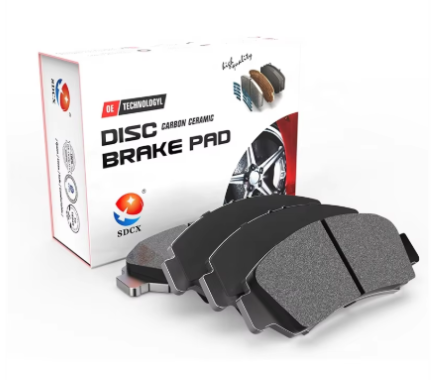Қазіргі кездегі көлік тежеуіштерінің технологиясын түсіну
Көліктің қауіпсіздігіне келсек, дискілік тежеуіш жүйесі автомобиль өнеркәсібі тарихындағы ең маңызды жаңалықтардың бірі болып табылады. Бұл күрделі тежеуіш механизмі көлікті тоқтату әдісін түбегейлі өзгертті, ескі трамвайлық тежеуіш конструкцияларына қарағанда аса сапалы өнімділік пен сенімділік қамтамасыз етеді. Дискілік тежеуіш жүйесінің негізгі жұмыс істеу принципі тежегіш тақташалары және металдық дискінің қозғалыстағы көлікті баяулату немесе тоқтату үшін қажетті үйкеліс күшін туғызу арқылы жүзеге асырылады.
Дискілік тежеуіш жүйесінің негізгі компоненттері
Тежеуіш роторы және оның қызметі
Тежегіш роторы немесе дискі барлығынан көрінетін дискілі тежегіш жүйесінің бөлігі болып табылады. Шойын немесе көміртегі-керамикалық материалдардан жасалған бұл дөңгелек металдық диск доңғалақтың осіне бекітіліп, доңғалақпен бірге айналады. Ротордың конструкциясы тежеу кезінде пайда болатын жылуды шашыратуға көмектесетін арнайы желдету мен суыту құрылғыларын қамтиды, қатаң жағдайларда да тұрақты жұмыс істеуін қамтамасыз етеді.
Қазіргі роторлар жиі көлденеңінен ұңғылау тесіктері немесе бороздалар бетін қамтыған күрделі конструкцияларды пайдаланады. Бұл ерекшеліктер тежегіштердің қызуын төмендету, тежеу әсерінің төмендеуін азайту және ротор мен тежегіш колодкаларының арасындағы судың және газдардың шығуына мүмкіндік беріп, ылғалды жағдайда жақсырақ өнімділік көрсету сияқты бірнеше мақсатты орындайды.
Тежегіш каліперлері мен гидравликалық жүйе
Тіректің табақшасы дискілі тежеуіш жүйесінде тежеуіш колодкалары мен гидравликалық поршеньдер үшін қорап ретінде қызмет етеді. Жүргізуші тежеуіш педалін басқан кезде гидравликалық қысым поршеньдерді роторға қарсы тежеуіш колодкаларын қысуды міндеттейді. Қазіргі заманғы көліктерде әдетте жан-жаққа ығысатын тіректің табақшалары қолданылады, олар колодкалардың біркелкі тозуын және тежеуіш күшінің тиімді таралуын қамтамасыз етеді.
Гидравликалық жүйеге негізгі цилиндр, тежеуіш сызықтары мен тежеуіш сұйығы кіреді. Бұл желі педальдан келетін күшті тіректің табақшаларына жеткізеді және гидравликалық артықшылық арқылы жүргізушінің күш енгізуін көбейтеді. Тежеуіш сұйығының сапасы мен техникалық күтімі жүйенің дұрыс жұмыс істеуі үшін маңызды, өйткені ластанған немесе ескірген сұйық тежеуіш жүйесінің жұмыс өнімділігін төмендетуі мүмкін.

Дискілі тежеуіштің жұмыс істеу принципінің физикасы
Үйкеліс және жылу бөлінуі
Дискілік тежеуіш жүйесі кинетикалық энергияны үйкеліс арқылы жылу энергиясына айналдыру принципіне негізделген. Тежеуіш колодкалар ротормен жанасқан кезде үйкеліс пайда болып, көліктің қозғалыс энергиясы жылуға айналады. Бұл процесстің өтуі үшін температураның өте жоғары мәндеріне төт бере алатын және үйкеліс коэффициентін тұрақты сақтай алатын материалдар қажет.
Қазіргі таңдағы тежеуіш колодкалардың құрамы температураның және жағдайлардың кең ауқымында оңтайлы үйкеліс сипаттамаларын қамтамасыз ету үшін жасалған. Бұл материалдар тежеу күшін, тозуға төзімділікті және дыбысты азайтуды үйлестіруі тиіс, сонымен қатар тежеуіш шаңын азайтуға тырысады.
Күшті тарату және тежеу тиімділігі
Дискілік тежеткіш жүйесінің тиімділігі тежеткіш колодкаларының бетіне түсетін күштің таралуына көп байланысты. Мамандар жүйені қажетті біркелкі қысымды сақтау үшін жобалайды, бұл колодкалардың біркелкі емес тозуын болдырмау және ең жоғары тежеу тиімділігін қамтамасыз етеді. Бұған көмектесетін тежеткіш суппортының жобасы ерекше маңызды рөл атқарады, ал сонымен қатар жоғары өнімділікті қолданбаларда көбінесе күштің таралуын жақсарту үшін бірнеше поршеньдер қолданылады.
Гидравликалық жүйенің беретін механикалық артықшылығы тежеткіш педалына әсер ететін салыстырмалы түрде жеңіл қысымды колодкаларда үлкен басу күшіне айналдырады. Бұл жүйе әдетте 30:1 немесе одан да жоғары механикалық артықшылық қатынасын қамтамасыз етеді, сондықтан да орташа педаль әсері арқылы қажетті қарқынды тежеуді қамтамасыз ету мүмкін болады.
Дискілік тежеткіш жүйелерін пайдалану және күтіп ұстау
Кезеңдік тексеру талаптары
Дискілік тежеуіш жүйесін дұрыс пайдалану визуалды тексеруден басталады. Негізгі тексерілетін жерлерге тежеуіш табақшаларының қалыңдығы, ротордың бетінің жағдайы және каліпердің қозғалысы жатады. Маман механиктер тежеуіш табақшаларының қалыңдығын әр 12 000 шақырым сайын тексеруді ұсынады, бірақ нақты тексеру мерзімдері жүргізу жағдайлары мен көлік пайдалану сипаттамаларына байланысты өзгеруі мүмкін.
Роторды тексеру кезінде бетінің тозуын, қалыңдығының өзгеруін, соғылғанын немесе қызуын бақылау қажет. Қазіргі заманғы көліктерде табақшалардың тозу датчиктері орнатылған, олар табақшаларды ауыстыру қажет болған кезде электрондық хабарлама береді, бірақ жүйені толық тексеру үшін визуалды тексеру әлі де маңызды.
Алдын ала жөндеу шаралары
Дискілік тежеуіш жүйесінің өнімді жұмыс істеуі үшін кездейсоқ тежеуіш сұйықтығын ауыстыру мен жүйені ауадан тазарту қажет. Уақыт өте тежеуіш сұйықтығы ылғалды сіңіріп алады, бұл жүйенің тиімділігін төмендетіп, компоненттердің коррозияға ұшырауына әкелуі мүмкін. Көбінесе өндірушілер тежеуіш сұйықтығын екі жыл сайын немесе 24 000 шақырым сайын ауыстыруды ұсынады.
Білікті механиктар жаңа тежеуіш бөлшектерін орнату кезінде тиісінше құлпын жасау үдерісінің маңыздылығын атап көрсетеді. Бұл үдерісті әдетте «жатқызу» деп атайды, ол тежеуіш колодкалары мен дискілер арасында дұрыс үйкеліс материалдарының ауысуын орнатуға көмектеседі, сонымен қатар тежеуіштің ең жоғары өнімділігі мен бөлшектердің ұзақ қызмет етуін қамтамасыз етеді.
Жиі қойылатын сұрақтар
Дискілі тежеуіш колодкалары әдетте қаншалықты ұзақ қызмет етеді?
Дискілі тежеуіш колодкаларының қызмет ету мерзімі жүру жағдайларына, көлік түріне және колодкалардың материалдық сапасына байланысты әлдеқайда әртүрлі болады. Орташа есеппен, тежеуіш колодкалары 30 000-70 000 миль аралығында қызмет етеді. Қалалық жүрудің жиі тоқтаулары дискілі тежеуіштердің тез тозуына әкеледі, ал магистральдық жүру оған қарағанда тиімдірек.
Дискілі тежеуіштер неге барабан тежеуіштеріне қарағанда жақсырақ өнім береді?
Дискілі тежеуіштер жақсы өнімділік көрсетеді, себебі олар жылуды жақсы шашыратады, үйкеліс сипаттамалары тұрақтырақ, сонымен қатар өзін-өзі реттеу мүмкіндіктері жақсы. Олар сонымен қатар тежеуіштің «жұмсаруына» қарсы тұра алады және сулы жағдайда тиімдірек жұмыс істейді.
Дискілі тежеуіштер неге үрмелейді?
Тежегіш шуын түрлі себептер туғызуы мүмкін: тозып кеткен тежегіш колодкалары, жиналған тежегіш шаңы немесе компоненттер арасындағы тербеліс. Кейде кейбір тежегіш колодкаларының материалдары табиғи түрде көбірек дыбыс шығаруы мүмкін, әсіресе суық немесе ылғалды жағдайда. Кезек күтім жасау және сапалы ауыстыру бөлшектері жағымсыз дыбыстарды азайтуға көмектеседі.

